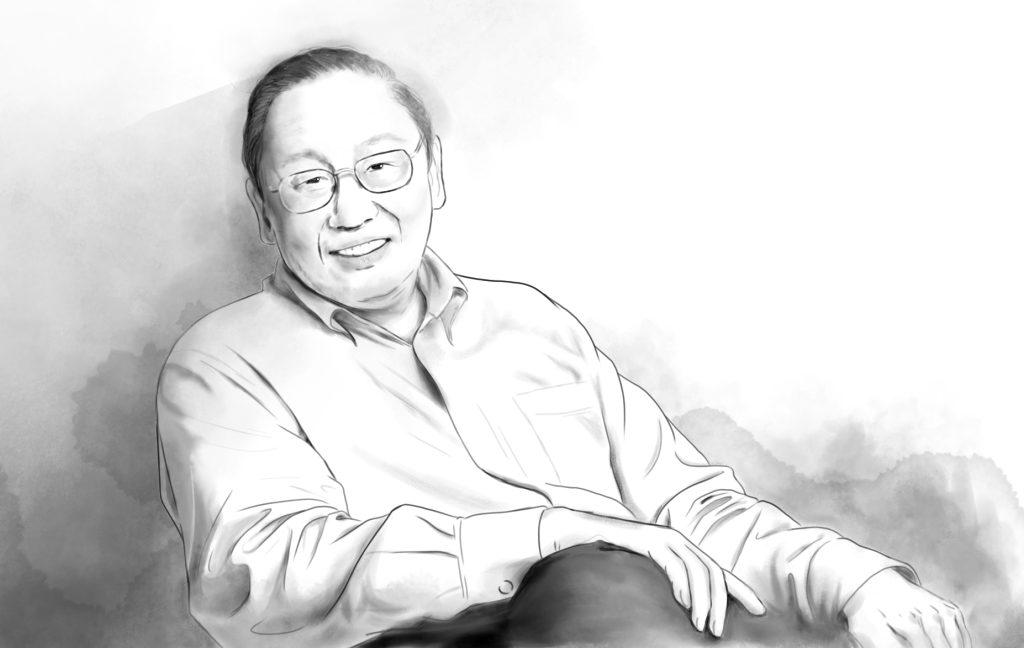Pasabilis To Joma with Love

To Joma with Love
by Lysa Sumuroy
Outside the revolutionary circle, Ka Jose Maria Sison, the venerated Marxist of the modern Philippine revolution, was seen by pundits of the country’s current political climate, depending on where they fall on the spectrum, either as an accomplished intellectual giant or a terrorist who leads the Filipino people’s war via remote control.
Inside the ranks of revolutionaries, however, above all else, Ka Joma will always be THE hero. Bayani. Martir.
But surely there were facets to his personality than what met the eye or what comrades read, heard or spoke about him through the years? And so, in honor of his birthday on February 8, it is worth taking stock of what Ka Joma was, stood for or appeared to be to the people who have never met him but continue to be inspired by his lifelong legacy. To the common Red fighter, who was Ka Joma to them? How did they first encounter the name JMS?
In 2017, when Ka Torge first became an organizer for the youth sector, her grandmother told her, not without some slight malice, that Joma was once photographed dancing with the actress Ara Mina. Her grandmother mocked her for “idolizing” Joma who was “living so luxuriously abroad.”
“I heard later from some comrades—I didn’t know if this were true—that the photo was taken during a gathering of Filipino migrants in the Netherlands, and that Ka Joma was just among other people whom the actress danced with,” Ka Torge, who joined the NPA in 2018, recalls now. “It was said that when actor Janno Gibbs, who was with Ara during the event, asked her if she knew whom she had danced with, the actress supposedly didn’t even know who Ka Joma was. So I told my grandmother that not everything in the tabloids is true, especially when it comes to news about Ka Joma.”
Ka Torge says the ruling class and the elite-controlled mass media, especially the spindoctors of the Armed Forces of the Philippines, are masters in twisting the story to fit their narrative. “That image of the ‘dirty old man,’ which the AFP tried but failed to spin, was always something that made me laugh, considering the length that the enemy would desperately go in order to besmirch Ka Joma.”
Meanwhile, newly-married NPA couple Ka Sel and Ka Mike, who have had their fair share of ups and downs in building their proletarian relationship while waging the people’s war, both recall one particular advice that one of their wedding-sponsors-slash-godparents gave them: “Emulate how Ka Joma and Ka Julie maintained their relationship throughout the years.”
Ka Sel surmises that the elderly couple “must have communicated effectively and supported each other in their respective tasks in the revolution.” “They must have, because in our experience,” gesturing to her and her husband, “being open to each other’s criticisms is key to a genuinely equal relationship.”
For them, the advice had been and continues to be their rule of thumb in navigating the many twists and turns of their revolutionary married life. Ka Mike says being each other’s rock not only in a couple’s personal relationship but in political work as well is important, noting how many of Ka Joma’s writings were edited by Ka Julie herself. “As they say, they were the wind beneath each other’s wings,” quips Ka Sel.
Once, when comrades were watching the biopic, “The Guerilla is a Poet,” they had been astonished at how Ka Joma and Ka Julie’s apartment was so scant of personal belongings or creature comforts. Smiling, Ka Jen says, “I knew that JMS was from the landlord class. But I was very impressed that like most of us Red fighters, he had little to no personal property to his name.”
When the camera cut to a close-up shot of their family picture, Ka Rico had mentioned, “Their only reminder of home must have been that photo.” Comrades nodded in agreement. Ka Rico adds, “Like Ka Joma, we should make our families an inspiration in waging the armed struggle. More importantly, we should make them understand that they are a part of the people’s war.”
During one of their rituals called pandesalan (a shorthand for political discussion done during morning coffee), Ka Maddy had asked the members of her team, “If you were captured and tortured by the enemy, what would you do?” Ka Jong had replied, “I would try to emulate Ka Joma. He survived nine years in the hands of the Philippine Constabulary (PC). Amid the carrot and stick of torture and bribery, he never yielded his principles.”
The issue seems to hit close to home, especially in the light of the handful of surrendered “cadres” who have now allowed themselves to be used as outspoken mouthpieces of the NTF-ELCAC and the AFP. “When I think about those turncoats,” Ka Ramon seethes, “I think about Ka Joma and his tenacious revolutionary spirit. His belief on the invincibility of the revolution and the people’s army had been tempered through constant practice of Marxism-Leninism-Maoism (MLM).”
Ka Ramon denounced these unremolded ex-comrades-turned-rabid-counterrevolutionaries as “foolish and self-serving” in peddling the illusion that through cooperation with the exploiting class and its armed fascists, they could solve the basic problems of the people. “Of course, I know that deep inside, they don’t believe the lies that the NTF-ELCAC is forcing them to say,” he muses. “They’re either pressured to do it out of fear of being killed or thrown in jail or were enticed with blood money, not thinking how dispensable they are when their usefulness to the counterinsurgency campaign runs dry.”
Ka Joma’s unyielding faith in the people’s war is more urgent than ever, says Ka Alay, because the class enemy is trying desperately to make the revolution seem irrelevant, “what with the billions of pesos being squandered for unsustainable projects that don’t address the root causes of landlessness, extreme poverty and social injustice. “Like Ka Joma, we must remain steadfast in our political line, the national democratic revolution being the only real solution to the basic problems of the people.” She likewise mentions how Ka Joma persevered in advancing the revolution even in times of intense military attacks, temporary setbacks and two painstaking rectification movements. “Sometimes all three at the same time!” she muses.
As one of the founding members of the Kabataang Makabayan (KM) or Nationalist Youth, Ka Joma would often make time to engage the youth in online video conferences. It was in several of such events that Ka Ella fondly remembers how even though Ka Joma had appeared old and sickly, he still remained young at heart. “Maybe it’s all the singing,” she chuckles, remembering Ka Joma’s many covers of revolutionary songs. “He always seemed cheerful when talking to young people. And as we sang the anthem of KM, I was was moved he suddenly shed a tear. He’s definitely a softie!”
Ka Ella says that Ka Joma remains to be an inspiration to young revolutionaries whose bodies are still healthy and young. Young Ka Ali agrees, as he waxes poetic to his fellow military cadres, “Our generation should strive to follow in the footsteps of Ka Joma and other revolutionaries who remained determined until the sunset of their lives. The sunrise that our children should see will be that of a bright, socialist one.”
Who was Ka Jose Maria Sison to the ordinary Red fighter? A clickbait for the enemy’s black propaganda campaign. A consummate Marxist and teacher. A faithful, supportive partner. A revolutionary who left the luxury of his class origin. A sentimental cover artist.
However, every comrade agrees that Ka Joma’s materialist determination and revolutionary optimism are what inspires them forward: that the people’s war, however long it takes and amid the bumps along the way, cannot be defeated because it is right and just.



